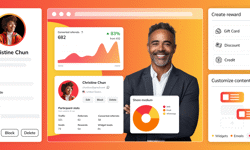
Publishers have had several years to prepare for the demise of third-party cookies and the jury is still out on what will prove to be the most viable alternative for advertisers looking to track users across the internet.
As one of the biggest success stories in the sector in recent years, all eyes are on Future to see how they respond to the challenge. At the forefront of helping to formulate their strategy is Chief Revenue Officer Zack Sullivan.
Whilst Google might have pushed back its plans to ditch third-party cookies on Chrome, Future and other publishers have been dealing with the issue for some time, as other major browsers such as Apple Safari and Mozilla Firefox have already introduced technology to prevent the use of third-party cookies.
The drive behind this seismic shift is to protect people’s privacy, as the use of third-party cookies had become so ubiquitous that users often didn’t know the extent to which they were being tracked.

Sullivan says they have been preparing for the change for several years, pursuing a multi-pronged approach, because there is not just one alternative, but a multitude of different measures used in concert with one another.
Like most of the bigger publishers, Future has its own audience data platform to build first-party segments, Aperture, which was launched in 2021. Last year, over one billion impressions were targeted with Aperture, and over 1,200 campaigns have run with Aperture targeting.
“The nice thing about our audience is we have high intent, we have specialist brands, we have a lot of them, that gives us scale, but it means we’re able to find users on different journeys,” he says.
The challenge is to tell that story to the market. To this end, they are continuing to invest in the platform, as well as working with partners, particularly the big media buyers.
Contextual targeting
Alongside their first-party data platform, the other major prong of their strategy is contextual targeting. This simple concept of placing adverts for products in an environment where people are already looking at making those kinds of purchases is having a comeback.
“Contextual worked so well for a long time, and suddenly it’s become zeitgeist again. It works well for us because of our specialist content. If you’re running ads on television reviews, there’s a good chance that user is interested in making a television purchase,” Sullivan explains.
This is true across Future’s 250 brands which span the sectors of consumer technology, home interest, women’s lifestyle, and gaming, as well as some niches such as motorboats and caravanning.
Contextual targeting not only delivers good outcomes but can also help marketers to reach audiences they might not otherwise have identified. It suits Future’s brands which are focused around helping people to make purchasing decisions.
“We talk a lot about allowing people to get the most out of their passions. When you land on a Future site, you’ve landed with intent,” says Sullivan. Before joining Future, he used to work at Autotrader, where he saw people on a similar journey.
“The vast majority of users came to the site to make a car purchase, and some people came to the site just because they really liked looking at cars. But that high intent audience was the majority and they always delivered good outcomes. Future’s exactly the same,” he says.
The power of a big media company like Future is to deliver scale to marketers. Founded in Bath in 1985, the company claims to reach just under half of all online users in the UK. But they have their sights set firmly on the much bigger opportunities available in the US, where their reach is just under a third of the online audience. Within their specialisms, in consumer tech they are number one in both the UK and the US according to Comscore, while in home interests, they are number one in the UK and in the top ten in the US.
Data enriching
With Aperture, Future is able to collate data from across its portfolio of over 200 brands to provide effective audience targeting for advertisers. Aperture processes and unifies 20 billion data points which are further enriched with behavioural signals from Future’s e-commerce platform, HAWK, to create attractive segments for media buyers. They focus on the verticals they work with, and want to understand how users access the site, on which device, how they got there, and what they are reading and doing on the site.
They are then able to enrich the data further using their own proprietary e-commerce stack, which allows them to see which affiliate links and retailers users are clicking off to. “That for us is a unique differentiator, it’s really valuable,” says Sullivan.
In addition, Future owns the price comparison website Go.Compare, a great source of high quality first-party data in terms of capturing demographic information such as email addresses, postcodes, household income, cars, and how many children users have.
One of the things that drives the most value is capturing the user in the moment of intent, that point when they are reading reviews of televisions, then they focus on a particular brand, before clicking off to the manufacturer’s site direct, or to a retailer such as John Lewis or Curry’s.
Clean rooms
Another of the alternative solutions Future is exploring is clean rooms. These are platforms that allow partners to upload their own first-party data and share elements of it, without compromising privacy. There are lots of different suppliers on the market, and most publishers have signed up to a few.
“As often happens in adtech, there’s an explosion of invention, lots of new companies emerge, then there’ll be a phase of consolidation. At the moment, we’re working with a lot of partners. In the future, I’d expect that we’d work with a fewer number of partners who’ve really consolidated their market share in the space,” Sullivan explains.
Wherever possible, Future builds its own technology, and this is also true of its contextual targeting solution, Future Context. This uses machine learning and artificial intelligence to understand what an article on one of their sites is about then allocate tags to it. But the human dimension is still important, and editorial teams can manually add tags too.
Editorial input
“We have lots of journalists in the company, they understand in a lot more detail what is this product, who is it for, and that tag then powers our contextual targeting. It’s all highly automated but then editorial teams can add that extra value on top.”
This combination of AI and human intelligence enables Future to add an extra level of targeting that is generally not available now that third-party cookies are deprecating. Sullivan believes the next six to nine months will be telling in how much media buyers use these alternative solutions and who they choose to spend their money with.
“There’s just so much going on and it’s hard to say this is a good solution, that’s a good solution. There are interesting players across the industry who’re doing different work and trying to stitch it all together,” he says.
He believes that performance will drive that investment, so Future is focusing on doing lots of testing with their main commercial partners to create internal case studies that will enable sales and marketing teams to become aligned on what works best and make them champions of these alternative solutions. Although it is a complex process, he insists the previous solution of third-party cookies was also complex.
“We’re trying to do a lot of engagement across the industry, trying to talk to partners across the industry to explain what we’re doing and be as transparent as we can be as a public company, about what our learnings are, what we’re doing next and inviting people to work with us and help co-shape our tech road map and our investment plans.”
The other side of his job is ensuring the technology is as good as it can be and liaising with editorial teams to make sure the data that they are capturing is representative of the audience.
“We use them like audience custodians, they really are the experts. When we say to them, this is our segmenting up of the audience, these are the profiles we think are correct, they can give us a good steer,” he explains.
The company’s biggest focus is developing its business in the US, where the ad spend is “disproportionately large”. In 2022, they acquired ‘Who What Wear’, a digital-only women’s lifestyle publisher with a big branded content division on the West Coast of the US, which gave them more expertise around creating valued content for the fashion and beauty industry in North America. Sullivan himself recently moved with his family to New York for a year, although they are now back in the UK, and he still travels frequently between the two. “The US market is more innovative, it is what leads global marketing, so if we want to be part of conversations like what are alternative data solutions, you’ve got to be in the market where that decision is being made. Whilst Google is listening to European partners, all the decision making is in the US, all the tech partners are in the US, it’s important to be there, to be part of that conversation,” he explains.
This article was first published in InPublishing magazine. If you would like to be added to the free mailing list to receive the magazine, please register here.












